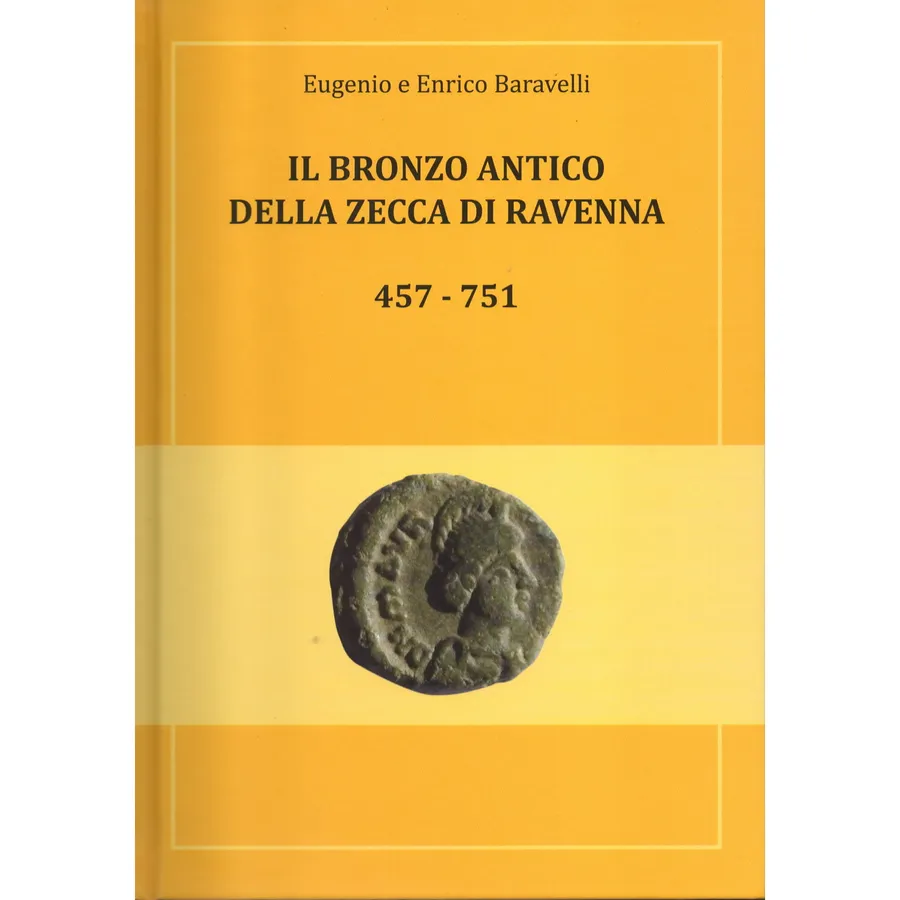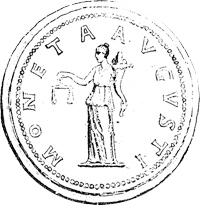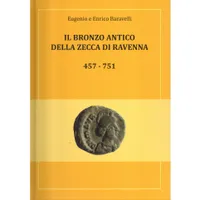- Title
-
Il bronzo antico della Zecca di Ravenna 457-751
- Authors
-
Baravelli Eugenio e Enrico
- Publisher
- Pubblicato dall'autore
- Year of publication
- 2013
- Language
-
- Italian
- Number of pages
- 288
- Format
- Hardcover
- Size
- 17.5 x 24.5 x 2 cm
- Weight
- 834 g
- Notes
-
During the late imperial period, Ravenna was a city whose importance grew to the point of becoming the seat of the imperial court and, consequently, also a mint, despite the economic difficulties of the time having undoubtedly led to a drastic reduction in coin production. In particular, these were gold coin productions intended for wide circulation and for hoarding, or bronze coins, which were instead meant for local circulation and small daily transactions. The latter is precisely the focus of the book under review, written by two passionate collectors and researchers, father and son, who have previously published on the subject, having already released a first edition in 2006, followed by a supplement.
The first coin recorded is a nummus of the Western Roman Emperor Majorian (457–461). The last coin, on the other hand, is the well-known and extremely rare bronze issue of the Lombard King Aistulf (749–756). In 739, the Lombards invaded the Ravenna territory, and in 751 they definitively occupied Ravenna, bringing an end to Byzantine rule over the Exarchate.
This book compares itself with numerous other works covering the same topic or related areas. For example, in 2006, a volume on ancient Ravenna coinage was published. We also recall various reference texts on late imperial and later Byzantine coins, such as the catalogs of the British Museum, the Bibliothèque Nationale, and the Dumbarton Oaks Collection. Despite the extensive body of previous studies, this book introduces new ideas and perspectives. Most notably, the publication of numerous rare, if not entirely unpublished, specimens from private collections will be of great interest to specialists, as these sometimes provide unexpected insights into Ravenna's coinage—a field often hindered by the scarcity of known examples or their poor state of preservation.
For each emperor, a brief biography is provided, followed by detailed entries of the bronze coins issued during their reign (for Constantine V, however, an exceptionally rare tremissis is also included). Each coin is dated and described, along with references to relevant bibliographies. The photographs, whenever possible, are in color and include enlargements. Each reverse is also illustrated, as drawings often facilitate the identification of low-quality coins more effectively than photographs. Additionally, each coin is cataloged with indications of its rarity and its presence in reference catalogs or recent auctions. The book contains numerous notes, proposals, and innovative insights from the authors, which reflect their commendable enthusiasm and deep passion for collecting. Readers, including other researchers, will undoubtedly find valuable points of interest.
With the Lombard conquest and the end of the Byzantine Exarchate, a coinage system—still obscure and extremely rare—also came to an end. This book, published in a limited edition of 500 copies, certainly contributes to a better understanding of this fascinating subject and will undoubtedly attract great interest among enthusiasts in the field. - Condition
-
New
Numbered and signed copy
Item added
Your cart has been updated. You can proceed with other purchases or complete your order.


